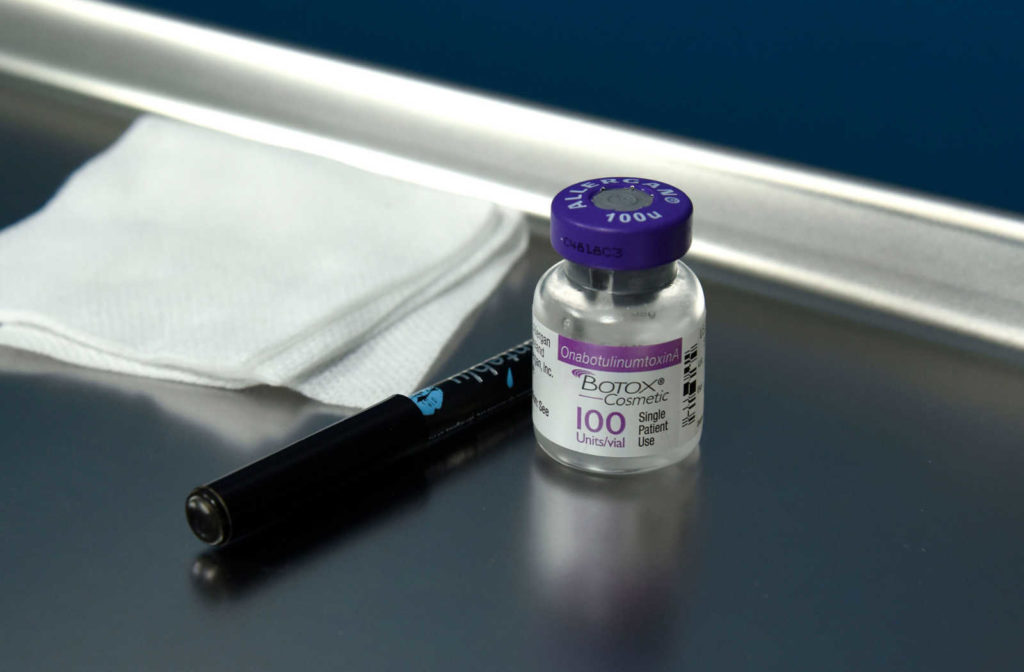Botox is a type of neuromodulator injection commonly used to reduce the signs of aging.
But while you may have heard a lot about Botox, there’s still a lot of information out there that is not commonly known by our patients and clients.
The effects of Botox are usually temporary, but there’s so much more to learn about Botox. We’re here to guide you through it!
What Is Botox?
Botox is a very common brand of neuromodulators. There are many brands of neuromodulators, including BOTOX, Dysport, Nuceiva, and XEOMIN.
Neuromodulators are designed to treat wrinkles and fine lines by stopping the signal from the nerves to the muscles that cause contractions. This interruption prevents the contraction, or squeezing, of a muscle that could result in wrinkles or lines.
Along with their cosmetic benefits, neuromodulators can be used to treat neck spasms, excessive sweating, overactive bladders, and even amblyopia (lazy eye).
Minimizing the frequency of your muscle contractions, allows your fine lines and wrinkles to “smooth out” over time. The effects of these neuromodulators usually last for 3 – 4 months. After this time, you can get more injections.
Neuromodulator injections are typically safe when administered by a certified healthcare professional. Contact us today to see if Botox is right for you!
Who Uses Botox?
Anyone can use Botox (with the approval and help of a licensed professional or medical doctor), so it’s difficult to say exactly what “type” of person would most likely use Botox. Botox can be used for a number of different reasons across the world.
Adults of all ages and genders can use Botox to enhance their natural beauty, reduce the appearance of facial lines, treat certain medical conditions, and even manage pain.
The most well-known use of these neuromodulators is cosmetic injections to reduce signs of aging. Botox and other brands can smooth lines and wrinkles that appear, or could appear, on your face, including your:
- Lips
- Chin
- Neck
- Nose
- Jawline
- Eyebrows
- Forehead
- Eyes (crow’s feet)
However, as mentioned earlier, these neuromodulators can be used for more than just anti-aging procedures. Botox has been used for many years in the medical world to treat a variety of conditions.

How Does Botox Work?
Neuromodulators block nerve signals to the muscles, preventing muscle contractions in the affected areas. These effects are generally temporary, lasting about 3 – 4 months on average.
When Botox has been locally injected in sparse amounts, it blocks the release of a neurotransmitter called acetylcholine. Acetylcholine is responsible for the transmission of nerve impulses within the central and peripheral nervous systems. As a result, when acetylcholine is “blocked,” the muscles and tissues that have been injected with botox are unable to contract (or “squeeze”), which prevents fine lines and wrinkles.
Botox only lasts for a few months because your body is always repairing and regenerating itself. Therefore, the “blocking” effect of Botox gradually subsides as new fusion proteins are created, which allows the release of neurotransmitters again, and the treated area to properly contract after some time has passed.
To determine whether you’re a good candidate for Botox injections, you’ll need to meet with your practitioner for a thorough consultation. They should review your medical history and past injections, as well as your goals and any concerns you have with you prior to your first treatment.
Before Your Procedure
Before your procedure, you’ll complete a consultation with your practitioner to review your treatment plan, associated risks, goals, and expected results. You’ll be asked to fill out a treatment consent form and review the pre and post-care instructions, as well.
During Your Procedure
You’ll be taken to a private treatment room for your procedure.
Your practitioner will use a thin needle to inject a small amount of Botox, or whatever neuromodulator you’re chosen, into the skin or muscles. Depending on your needs, you may receive multiple injections.
After Your Procedure
Your practitioner will verbally reiterate specific post-care instructions.
It’s important to not rub or massage the treated area for 24 hours after your procedure, but you can go right back to your daily routine after your procedure.
You should notice a difference a few days after your procedure, but your results can depend on a number of factors. Generally, results appear very quickly after treatment.
Is Botox Right For Me?
Contact us today to see if Botox, or any neuromodulator, is right for you! We want to help you look and feel your best every single day.